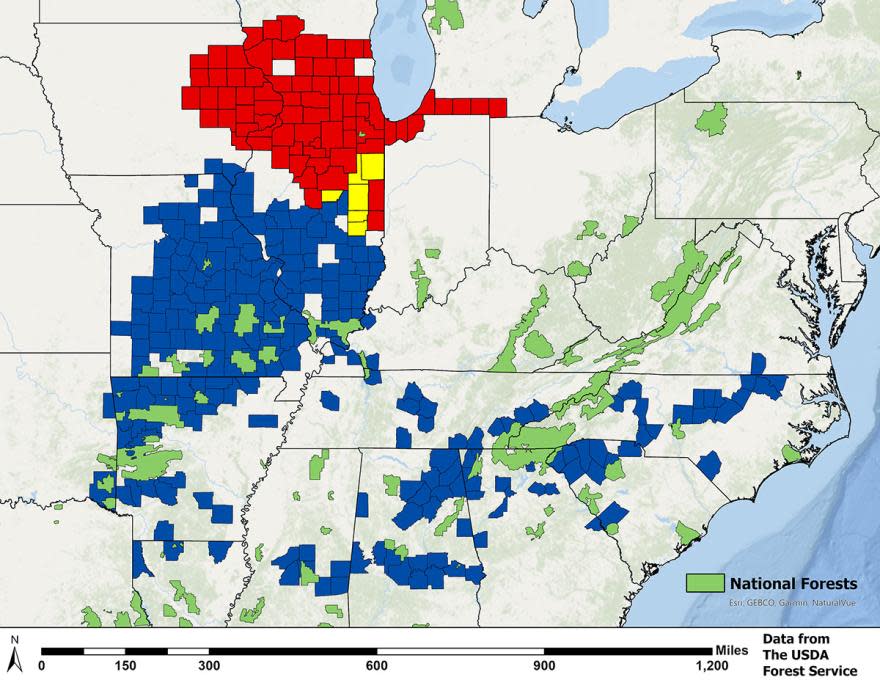Cicadas broods map: Why are there so many cicadas in Illinois?
Cicadas have emerged in many places in Illinois and started to serenade the state and other parts of the Midwest with their distinctive trilling.
The sheer volume of cicadas and their constant sound have led to an endless stream of questions about the insects.
Why are there so many cicadas?
There are so many cicadas because there is safety in numbers. The University of Purdue provided a list of the cicada’s natural predators that read something like the Tasmanian Devil’s prey list. The cicada invasion is a bounty for cicada killer hornets, birds, raccoons, bears, fish, coyotes, dogs, cats and even the occasional human. Ecologist Deborah Landau wrote cicadas are synchronized to emerge in vast numbers in the same time window to ensure enough will survive natural attrition to mate and produce the next swarm. The emergence of two broods in Illinois at the same time suggests cicadas are set to come out billions strong.
Cicadas broods map shows where cicadas will emerge

The U.S. Forest Service predicted an emergence of Brood XIII cicadas, a 17-year occurrence, in northern Illinois, southern Wisconsin, northwestern Indiana, southwestern Michigan and eastern Iowa. At the same time, 13-year Brood XIX cicadas are emerging in central Illinois and much of Missouri. Parts of central Illinois may see an overlap of the two broods. The Forest Service provided a map that shows one swath of western Illinois, starting just west of Peoria and running to the Iowa border, is not expected to see or hear any cicada activity.
Cicadas 2024: How to protect trees from cicadas
Where do cicadas come from?
Underground. According to Georgetown University biology professor, periodical cicadas spend 99% of their lives underground. They emerge for a few weeks every 13 or 17 to molt into adults, mate, lay eggs and die.
In a recent article for The Nature Conservancy, Landau wrote that a soil temperature of 64 degrees Fahrenheit at a depth of 12-18 inches triggers a cicada emergence.
Facts about cicadas life cycle: How long do cicadas stay around?
When are the cicadas leaving?
Sources vary on this question, but the general timeline is between a month and six weeks. The Smithsonian National Museum of Natural History projected the emergence would last between three weeks and a month. According to the Illinois Department of Natural Resources, an adult periodical cicada’s life span is one month, and the University of Purdue predicted they would be gone in a month-and-a-half. In any event, the cicadas should be gone by mid-to-late June.
Facts about cicadas: What animals eat cicadas?
Why do cicadas die?
Cicadas die because their goal is complete after they emerge from the soil, mate, and lay eggs. According to the National Wildlife Federation, periodical cicadas only need to live long enough to procreate the next emergence.
This article originally appeared on Journal Star: Cicadas map 2024: Why are there so many cicadas in Illinois?

